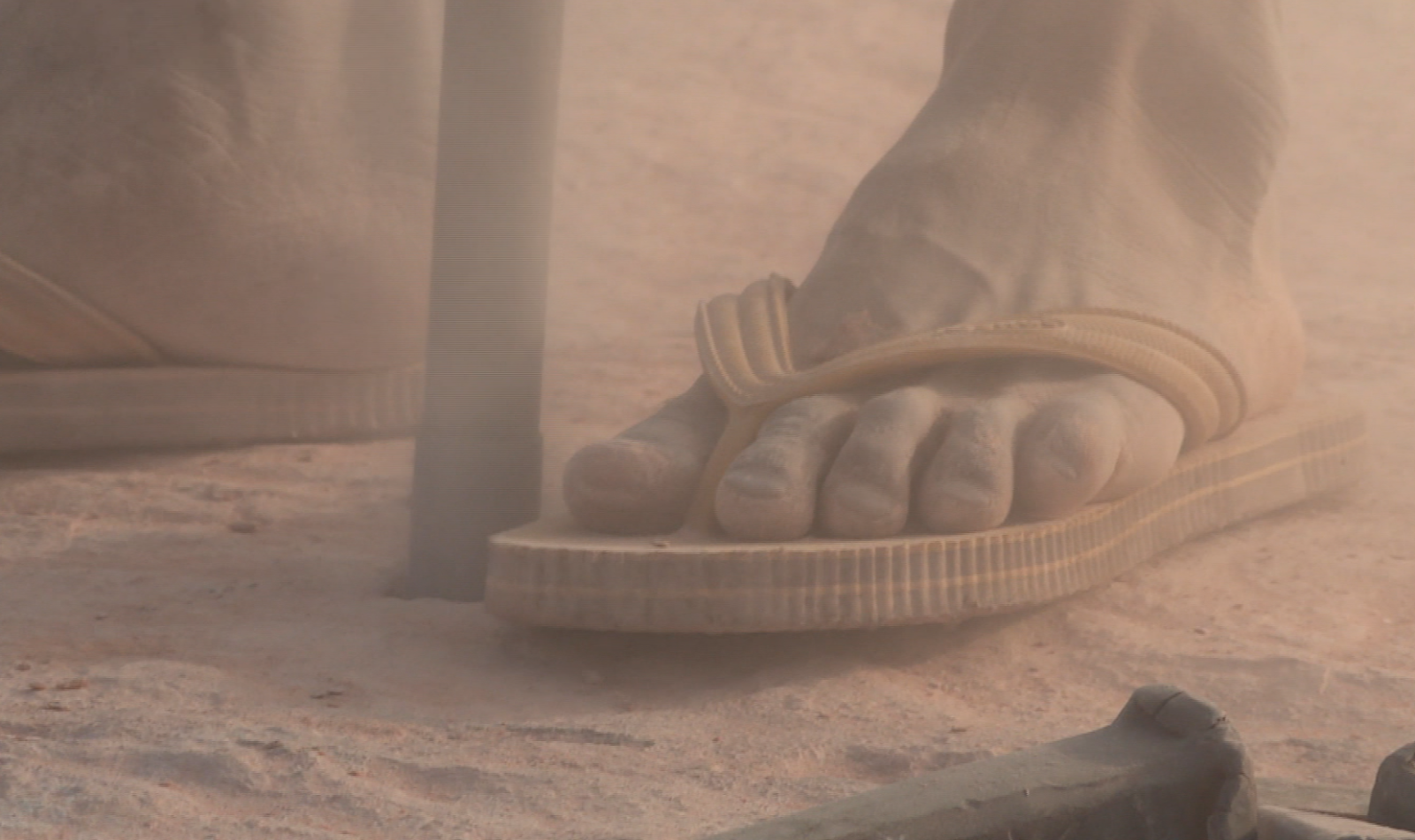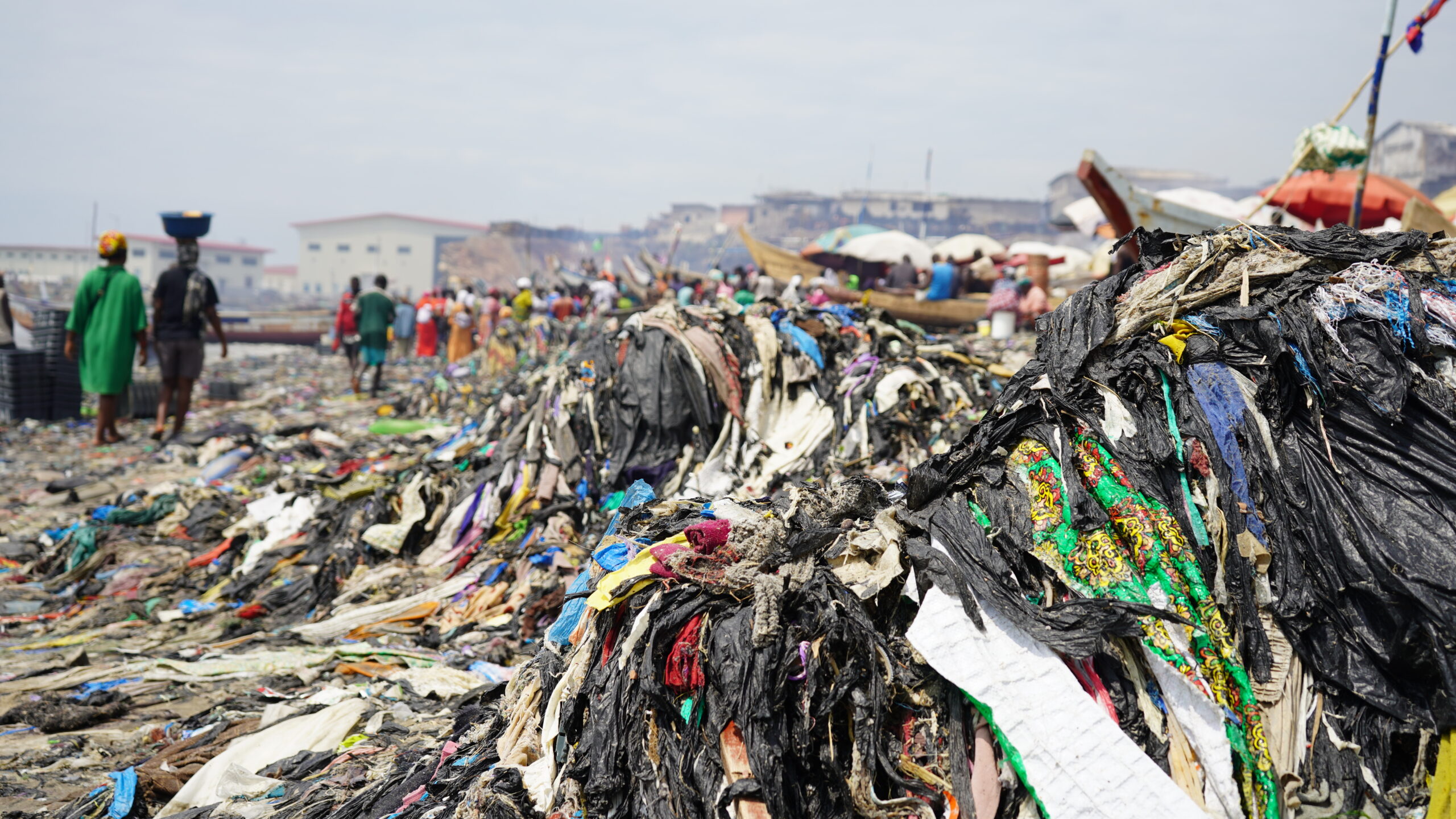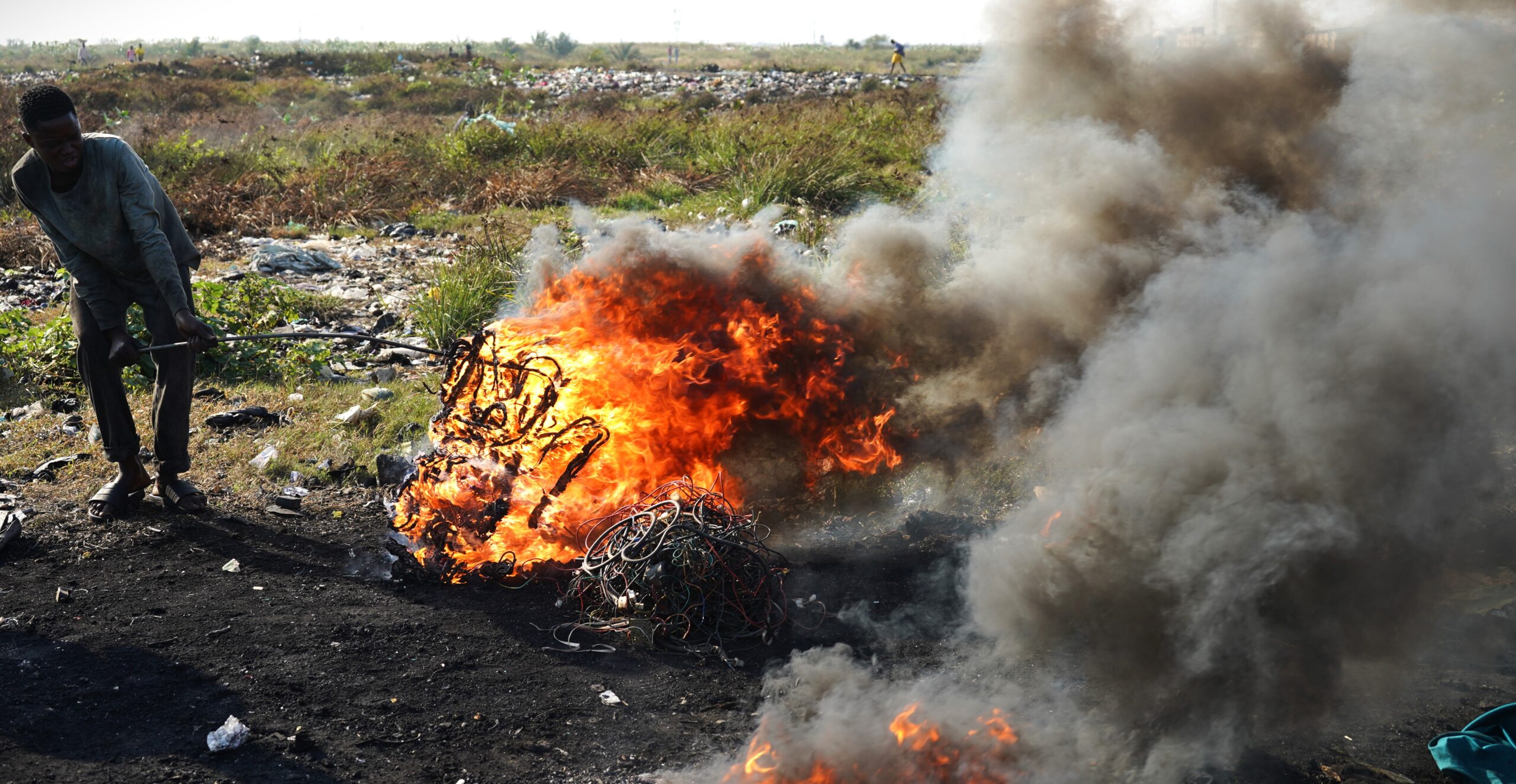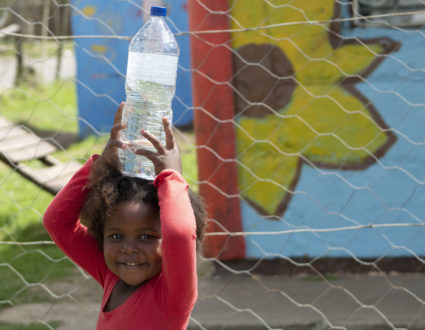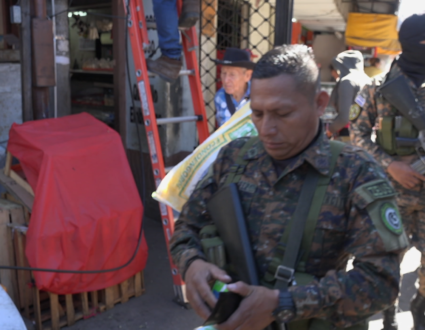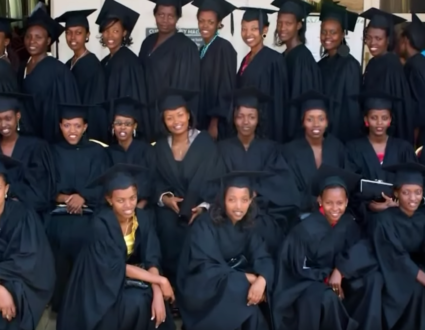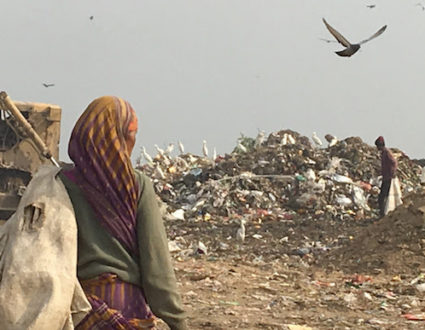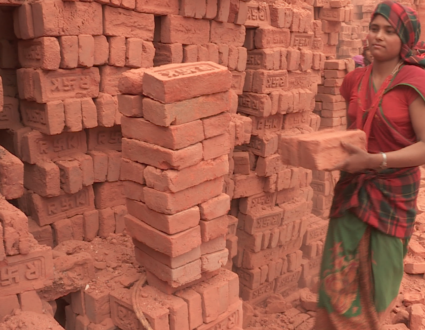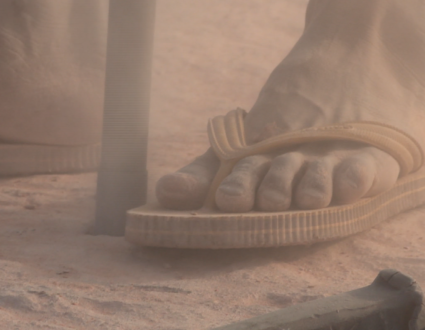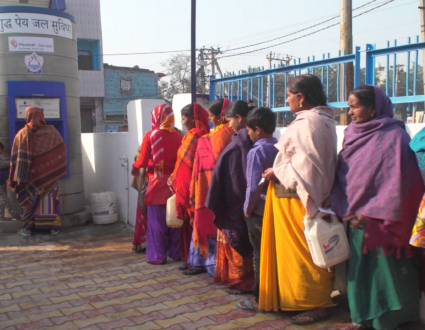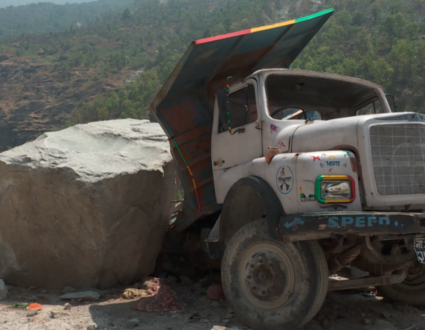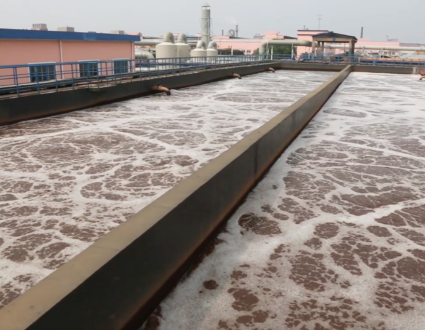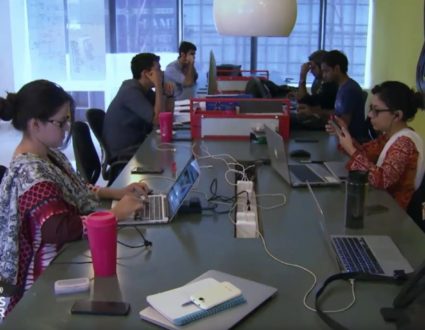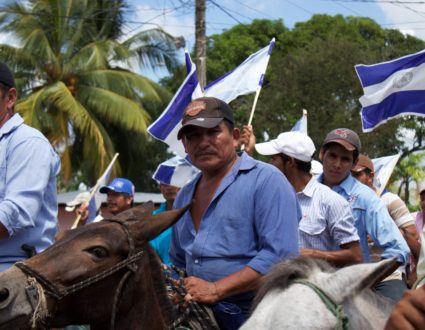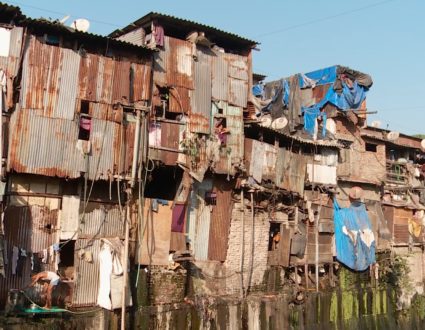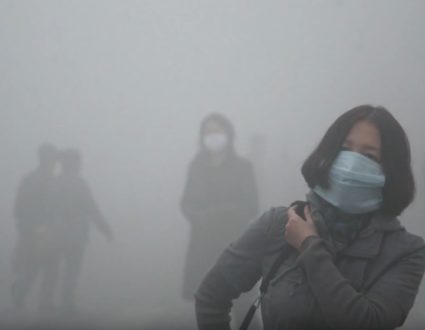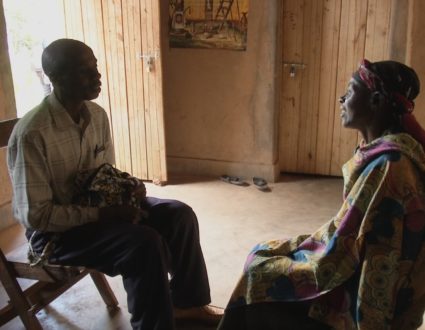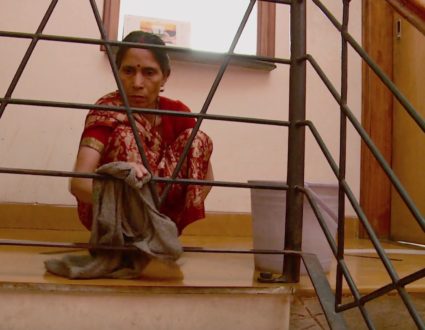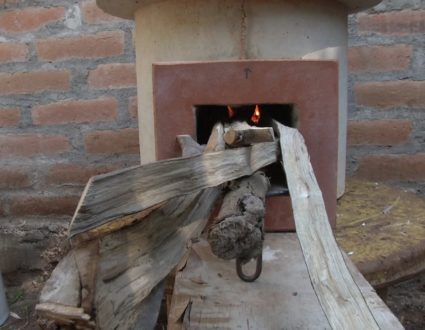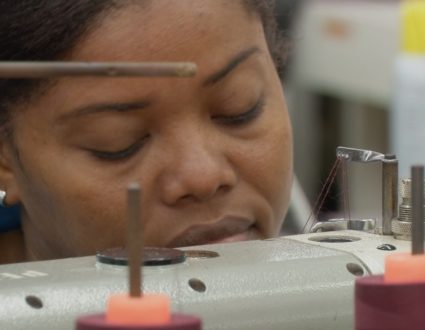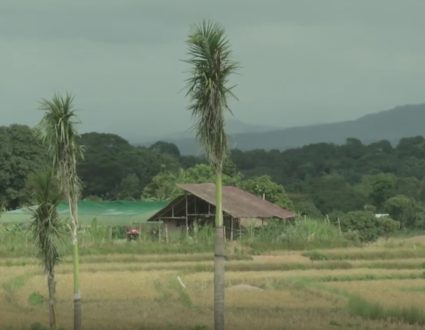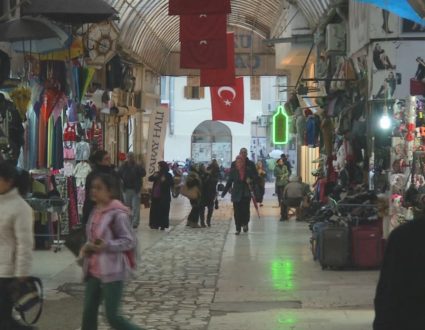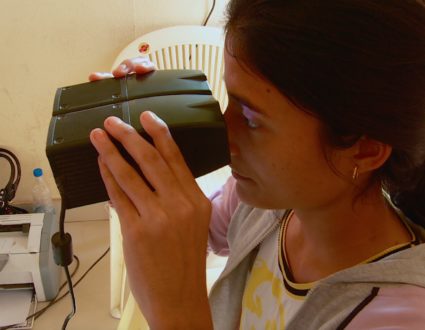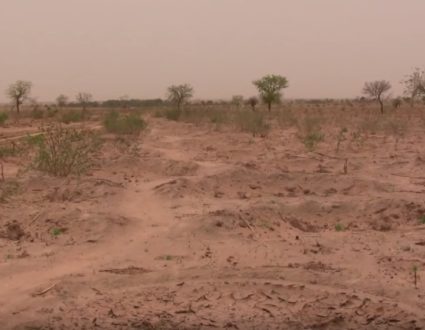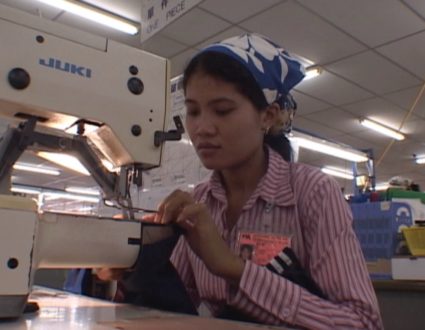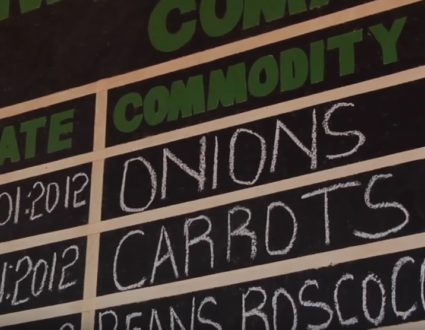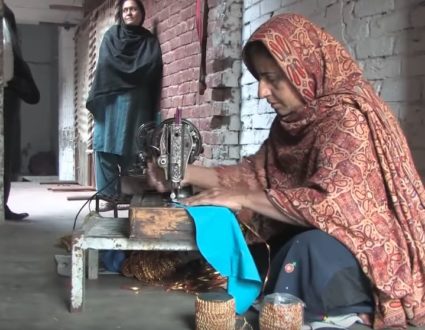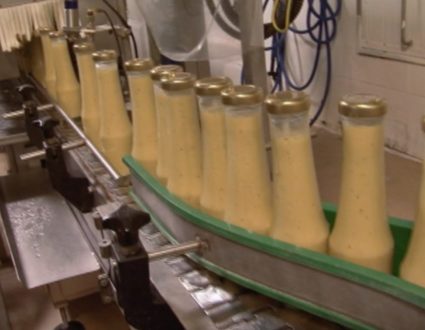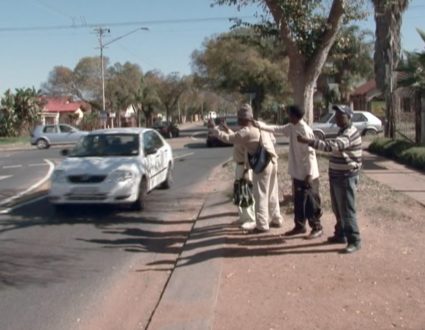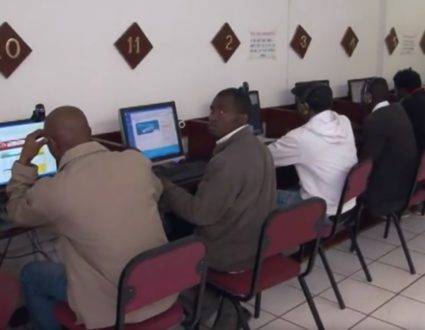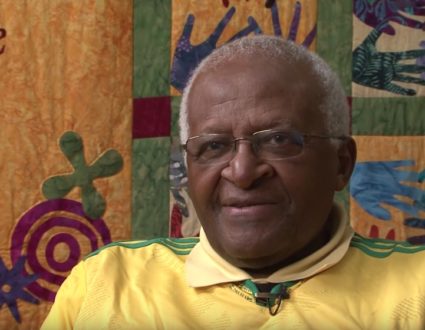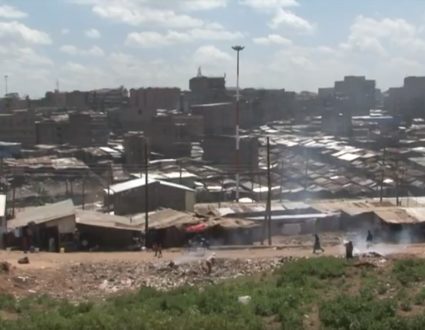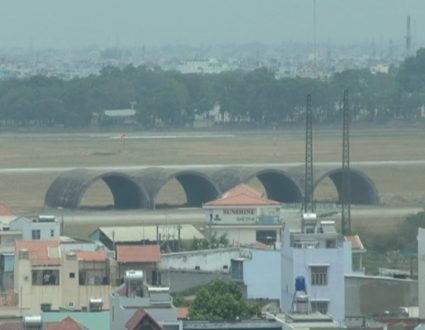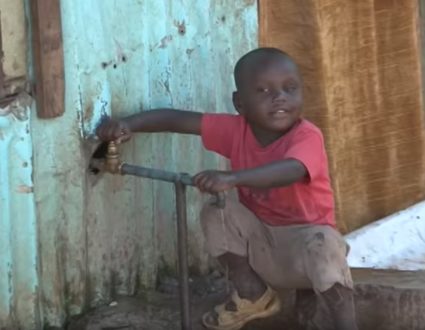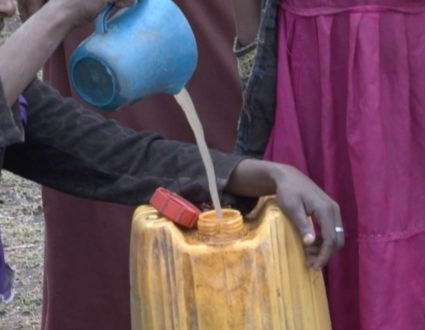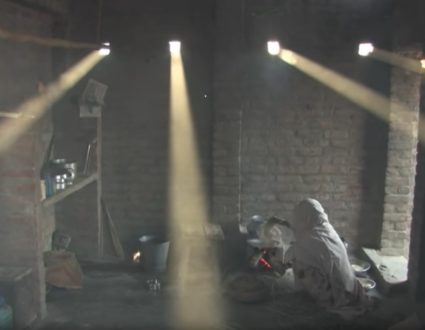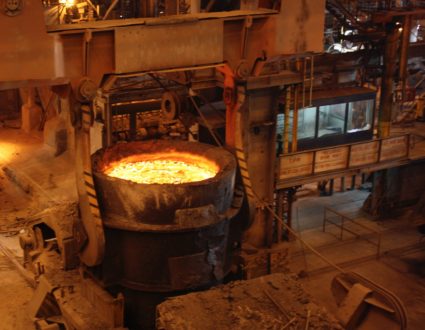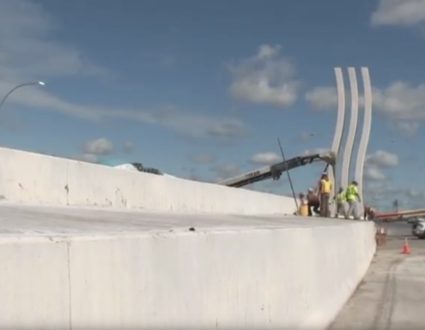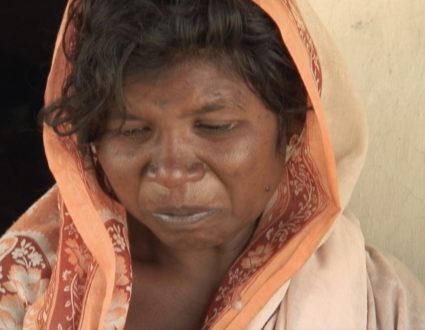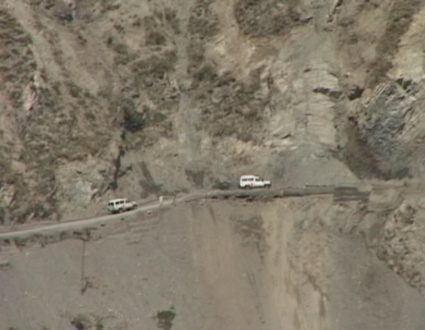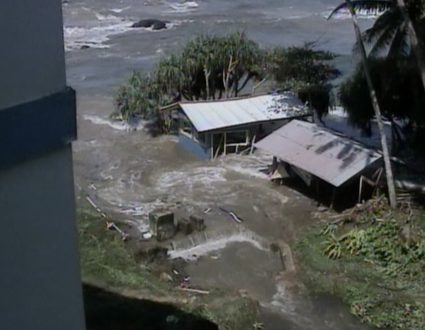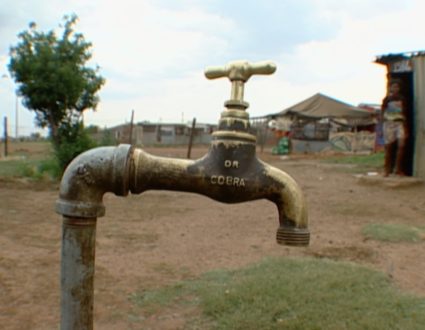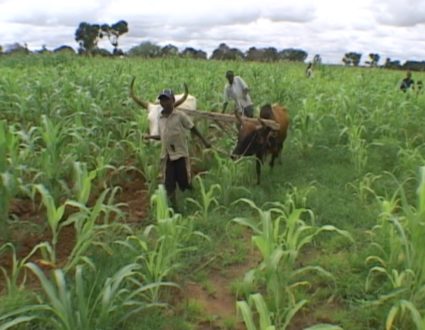JUDY WOODRUFF:Yesterday, special correspondent Fred de Sam Lazaro brought us a report on how big city street vendors are being left behind in India’s booming economy.Today, we travel to stone quarries in the rural northern part of the country, where a deadly disease has trapped workers there in poverty for generations.This report is part of our Agents for Change series.
FRED DE SAM LAZARO:Across the urban landscape rise majestic sandstone palaces, monuments and temples, built in India’s timeless architectural traditions.But what’s also timeless is how the stone continues to be mined, far from the cities here in the Rajasthan Desert. Early each morning, you hear the sound of sandstone being pounded into a gravel that is used in construction. No one is spared the drudgery, it seems, nursing mother with infant, young children.
QUESTION:How old are you?
CHILD (through interpreter):Ten.
FRED DE SAM LAZARO:He should be in school. It’s the law. But history suggests he will soon graduate to a quarry, part of a vicious cycle of generational poverty and disease.The work is physically brutal under a blazing desert sun. Power drills are a recent addition that have made these quarries more productive. But behind their thick clouds of dust, miners wear nothing but flip-flops on their feet-and nothing at all on their faces. They earn $2 to $4 a day, depending on the task.
DR. PRAKASH TYAGI, Executive Director, GRAVIS:The law of the mines is that, no work, no wage. So, the days when they can’t turn to work, because of an illness or because of some other problem, they can’t make any money.
FRED DE SAM LAZARO:And, Prakash Tyagi says, for an alarming number, perhaps a third of the 250,000 sandstone miners, the work is lethal, linked to silicosis, a slow, irreversible loss of lung function.
DR. PRAKASH TYAGI:Silicosis is a shame. Silicosis is something that shouldn’t exist in the contemporary times.
FRED DE SAM LAZARO:Silicosis is easily preventable with face masks and by using water to tamp down the dust that is everywhere. And the disease is now rarely seen in developed countries.And yet Tyagi, who is a medical doctor, says no one around here had ever addressed until about three decades ago, when his late father started a charity called GRAVIS, dedicated to improving life in this impoverished region.In the early days, many patients they saw were assumed to have tuberculosis, which is treatable with antibiotics.
DR. PRAKASH TYAGI:The treatment was given. Still, people were dying with lung issues very similar to T.B. But it wasn’t T.B.
FRED DE SAM LAZARO:Only after sending 250 X-rays to a research center in Delhi did GRAVIS learn it was dealing with silicosis and designed ways to help patient cope with the slow, degenerative, fatal condition.Today, GRAVIS runs field clinics near quarries, offering diagnostic services and a limited amount of drugs, like cough suppressants and inhalers that can control, though not cure, symptoms.
DR. PRAKASH TYAGI (through interpreter):Do you have T.B.?
FRED DE SAM LAZARO:Many, like this 25-year-old mother of two, hope that they just have T.B., which is a common coinfection.However, the paper she carried, but was unable to read, indicated she had silicosis.She may live to be 40 years old?
DR. PRAKASH TYAGI:At the most. So, she’s one of those accelerated silicosis cases. She is saying that she has been working in mines for about eight to 10 years. She would have started when she was 15 or 16.
FRED DE SAM LAZARO:Many start even younger, though it typically takes about 20 years of dust exposure for silicosis to develop, destroying lung tissue, rendering sufferers listless and unable to do much physical activity.
MAN (through interpreter):I have been ill for about seven years. For two years I have just haven’t been able to work at all.
FRED DE SAM LAZARO:Their condition will worsen inevitably, until, like Joga Ram, they are literally unable to breathe.
DR. PRAKASH TYAGI:This is how, typically, silicosis patients die.
FRED DE SAM LAZARO:Is he reasonably comfortable or is he in pain?
DR. PRAKASH TYAGI:He’s in a lot of pain.
FRED DE SAM LAZARO:Ideally, he would receive oxygen and steroids and die in a hospital or hospice setting. None of that is available or affordable here.The prolonged illness forces many families to incur debt, prolonging their medieval poverty into the next generation.Modu Devi echoed the sentiments of many in this group of silicosis widows.
WOMAN (through translator):We have to send our children to work. We have no choice. There is no other way to put food in our stomachs.
FRED DE SAM LAZARO:It’s not a lot of food. It was around 10:00 a.m. when we visited this village.”What have you eaten?” I asked. They hadn’t.”The truck will come by around midday and, only when we load it up, will we get the money to buy food,” she said.
QUESTION (through interpreter):How much will you get paid?
WOMAN (through interpreter):One hundred and fifty.
FRED DE SAM LAZARO:That’s about $2.50.These magnificent sandstone from which government officials governs in New Delhi may seem aloof and far removed from the suffering and labor of miners in Rajasthan. But the irony is that India actually passed laws decades ago to protect minors.There’s a wide gap between what’s on paper and the ground reality. The combination of official neglect, social indifference and poor education ensure laws are rarely enforced. This mine owner insisted that he makes masks and helmets available.
MAN (through interpreter):They just don’t wear them. They don’t like to wear them.
FRED DE SAM LAZARO:“Why not require them?” I asked.”They will just leave and go to the next mine,” he said.For their part, workers said they sometimes used masks while drilling, but in the blazing hot weather, they said, they are suffocating.
MAN (through interpreter):It’s impossible to breathe in them. We cannot breathe when we wear them.
FRED DE SAM LAZARO:A few mines now do provide for wet drilling and require workers to wear masks on certain jobs. This mine is run by Jeevraj Meghwal, who won a land concession under affirmative action policies to help people from lower castes.
JEEVRAJ MEGHWAL, Quarry Owner (through interpreter):I was once a laborer myself, so I know about the difficulties when you get sick, when you lose your income. In the beginning, we didn’t know much about silicosis. GRAVIS did help us understand it.
FRED DE SAM LAZARO:GRAVIS, which is funded by charitable donations from abroad and some Indian government grants, also helps affected miners navigate the daunting government bureaucracy.
DR. PRAKASH TYAGI:There is a lot of paperwork. There is a lot of delay. But we try to make sure that these people who are illiterate and less capable go through those hurdles.
FRED DE SAM LAZARO:The compensation, about 1,700 U.S. dollars for living victims, $3,000 for their survivors, provides some debt relief, more money to travel and perhaps find new work.But Tyagi says his and a few other groups meet only a small fraction of the need, while he says thousands of silicosis victims scattered across this remote region suffer and die each year without even a diagnosis.For the “PBS NewsHour,” this is Fred de Sam Lazaro in Rajasthan, India.
JUDY WOODRUFF:Fred’s reporting is a partnership with the Under-Told Stories Project at University of St. Thomas in Minnesota.You can watch his previous story about India’s urban workers on our Web site, PBS.org/NewsHour
A PREVENTABLE DEATH
In India’s Rajasthan desert, the work of mining sandstone can be lethal. Silicosis, a slow, irreversible loss of lung function, is easily preventable with masks, but workers wear little protection in the blazing heat. Special correspondent Fred de Sam Lazaro reports on how neglect, social indifference and poor education mean that laws for workers’ safety are rarely enforced.
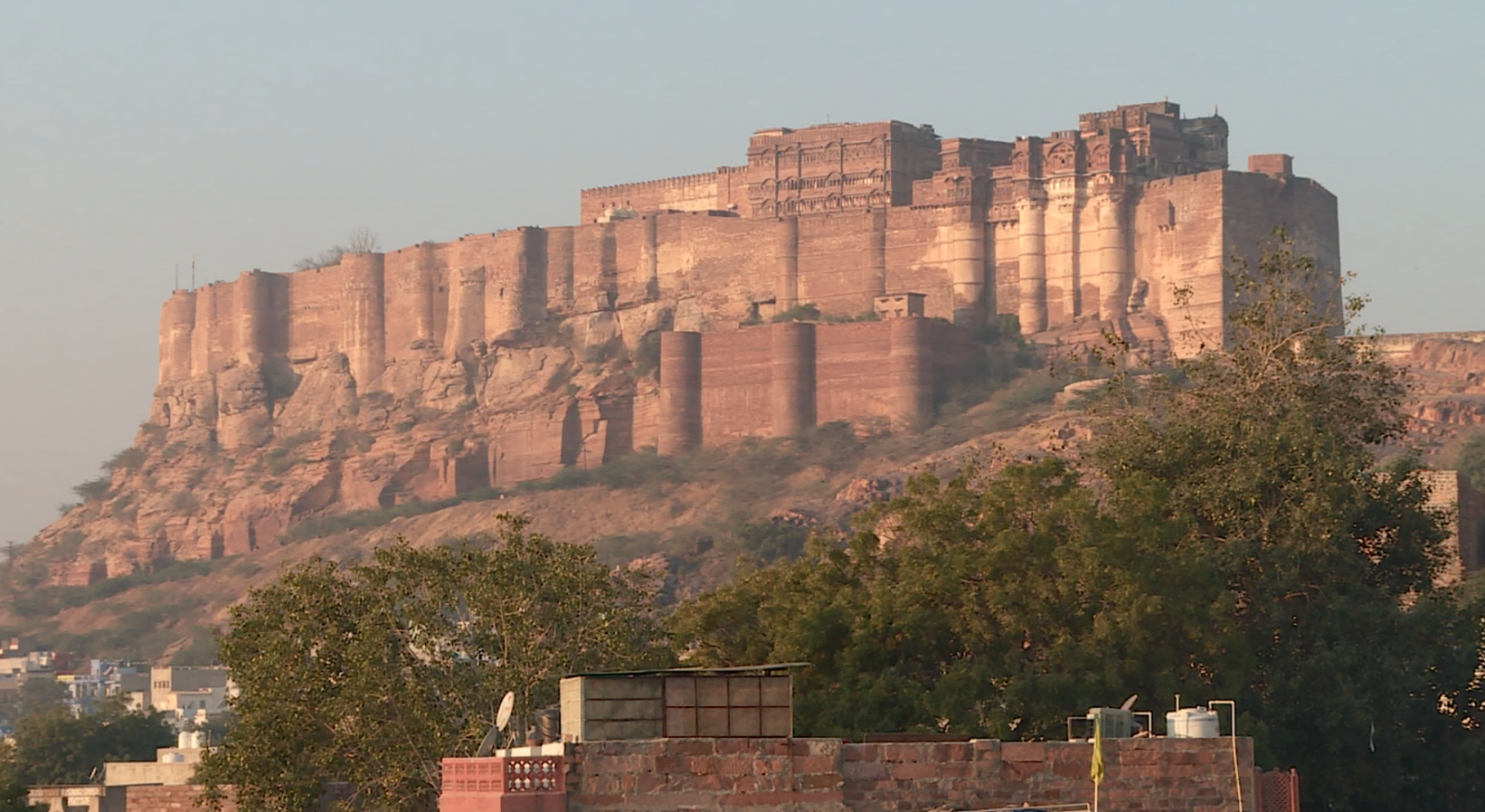
An Architectural Tradition
Across the urban landscape rise majestic sandstone palaces, monuments and temples, built in India’s timeless architectural traditions. But what’s also timeless is how the stone continues to be mined.
The Cost
Workers in the mines earn $2 to $4 a day depending on the task and are constantly exposed to clouds of dust. They don’t wear masks or protective gear. It typically takes about 20 years of dust exposure for silicosis to develop, destroying lung tissue, rendering sufferers listless and unable to do much physical activity.
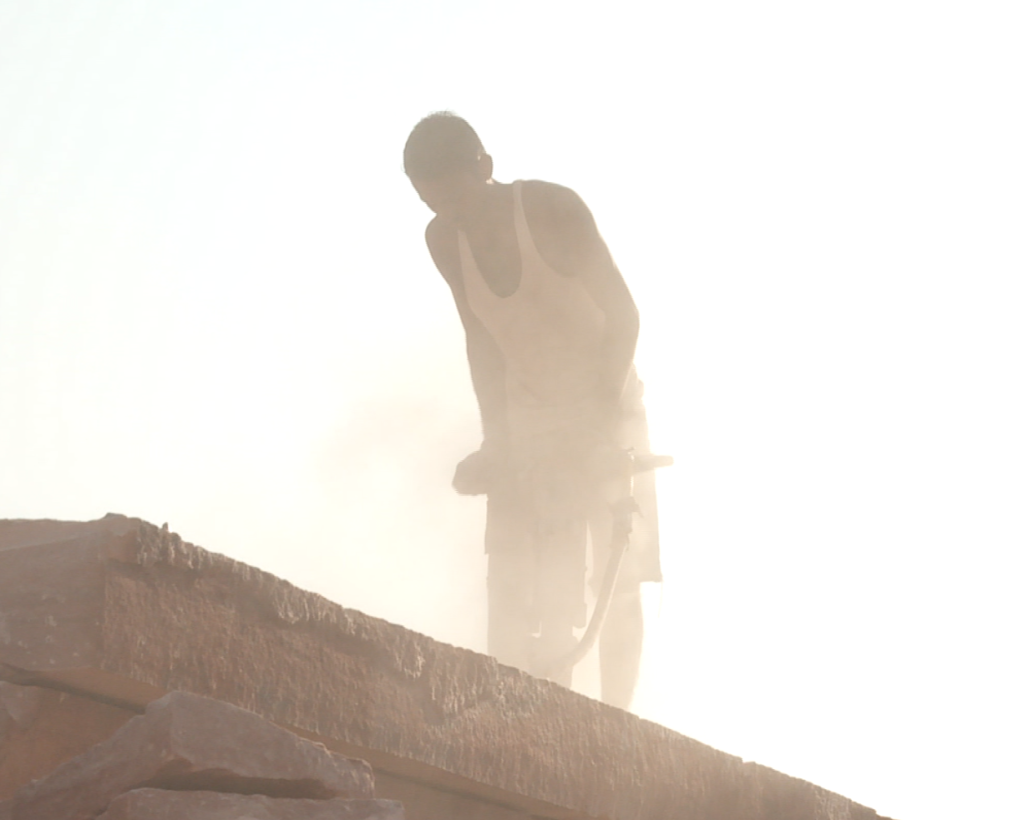
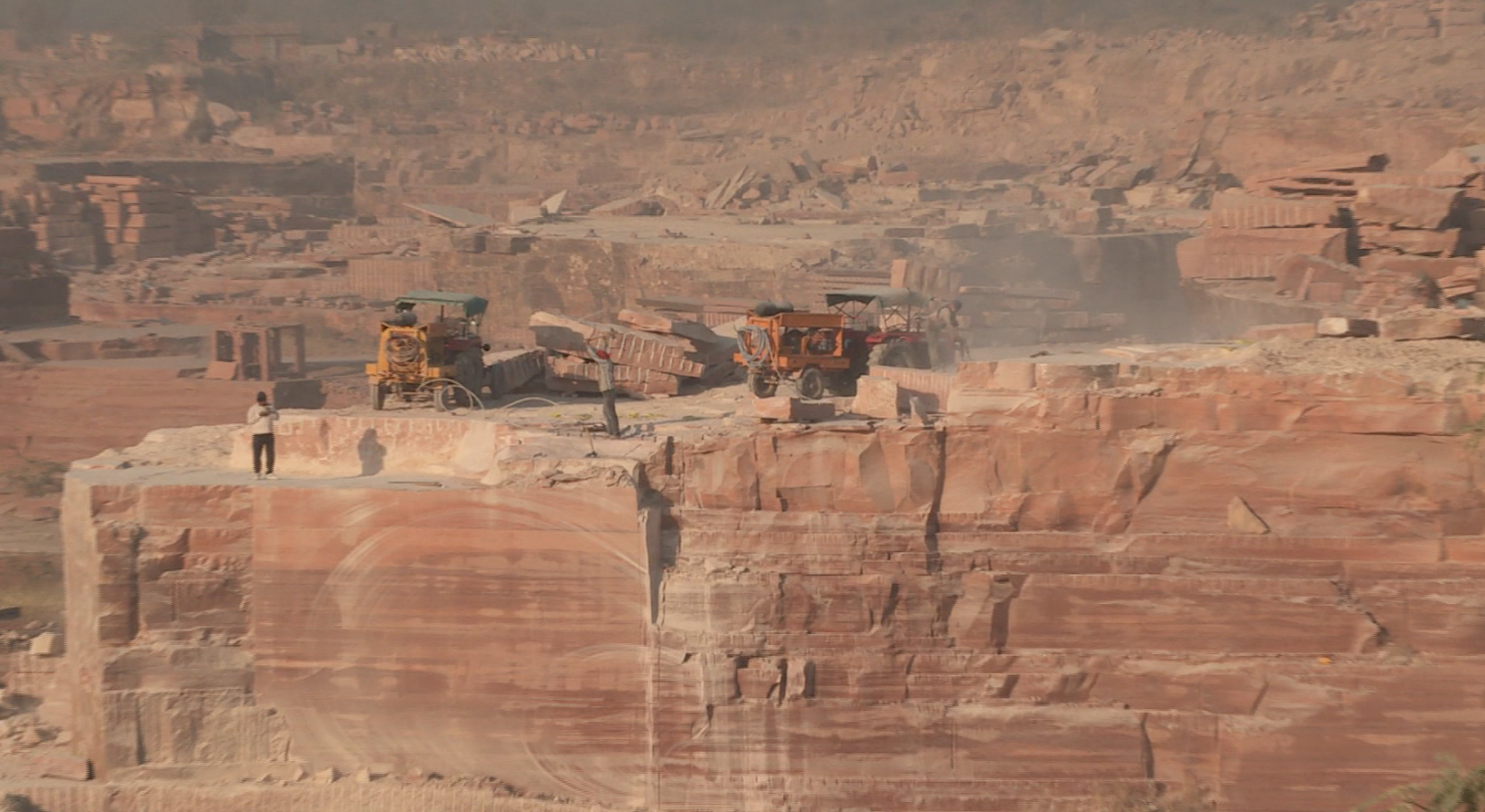
Poor Enforcement
India has passed laws to mandate safer mining practices, but neglect, social indifference and poor education mean that laws for workers’ safety are rarely enforced.
